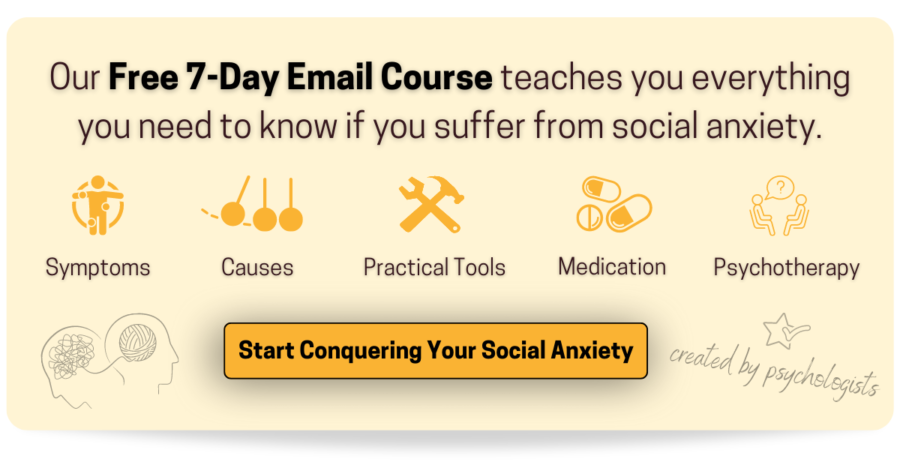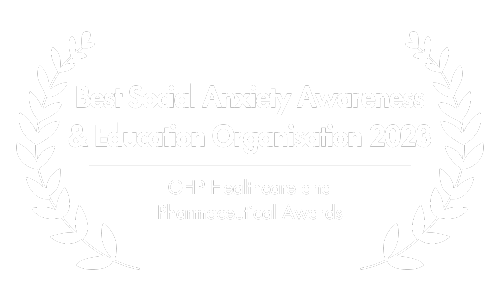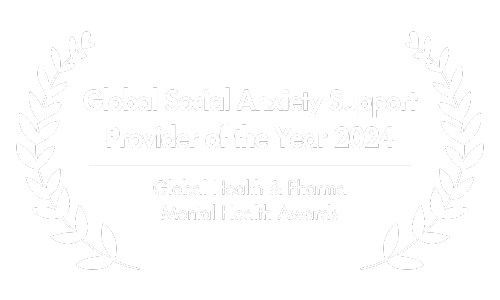Pen in Hand, Heart at Ease: Beating the Fear of Writing in Public
Imagine you’re sitting in a quiet room filled with people. You’re asked to jot down a few thoughts on paper, something that seems simple at first glance.
But as you pick up the pen, your hand starts to tremble, your mind races, and the weight of everyone’s eyes feels like a spotlight fixed solely on you.
This isn’t just a fear of writing; it’s a profound fear of being observed and judged in the process.

This fear, often associated with social anxiety, goes beyond the typical nerves of performing in front of others.
It’s the fear of writing while being observed, a situation that might seem mundane to some but can be paralyzing for those experiencing it.
This fear stems from a deep-rooted worry about judgment, mistakes, and the perceived scrutiny of every stroke or correction.

This article is dedicated to understanding this specific aspect of social anxiety, aiming to provide insight, empathy, and strategies for those who find the simple act of writing in front of others to be a daunting ordeal.
We will guide you through understanding this fear, connecting it to the broader spectrum of social anxiety, and equipping you with practical tips and exercises designed to foster resilience and confidence.

A. Understanding the Fear of Writing in Front of Others
This unique fear is more than just a dislike or discomfort; it’s an intense apprehension that arises from the act of writing when someone else might be watching.
It’s characterized by a visceral reaction — shaking hands, sweating, racing thoughts, and an overwhelming urge to escape the situation.
This reaction isn’t about the writing itself but the fear of being judged on the spot, the anxiety of making visible mistakes, about shaking hands, and also the vulnerability of exposing one’s thought process in real time.

Common Scenarios
This fear can manifest in a variety of everyday and professional situations, turning seemingly simple tasks into sources of anxiety. Examples include:
- Filling out forms at a bank while someone waits.
- Writing on a whiteboard during a meeting or class.
- Taking notes in a setting where others might glance over.
- Signing a receipt or document in the presence of others.
- Typing an email or message on a screen that might be visible to someone nearby.
- Composing a text or searching something on your phone while someone is looking over your shoulder.
In each of these scenarios, the common thread is the fear of scrutiny and the pressure to perform flawlessly under observation.

Connection to Social Anxiety
At its core, this fear is deeply tied to social anxiety, a condition characterized in the Diagnostic and Statistical Manual of Mental Disorders, Fifth Edition (DSM-5), as an intense fear of being judged, negatively evaluated, or rejected in social or performance situations (American Psychiatric Association, 2013).
The fear of writing in front of others exemplifies a specific manifestation of social anxiety, highlighting both performance and observation fears.
It revolves around the dread of negative evaluation, transforming the simple act of writing into a potential stage for judgment and criticism.

This connection underscores the profound impact social anxiety can have on seemingly ordinary tasks, magnifying the importance of understanding and addressing this fear.
B. The Causes Behind the Fear
Two key factors play a significant role in the development of this fear: the physiological basis of our nervous system and our psychological motivations and beliefs.

The Role of an Excitable Nervous System
By nature, some people have a nervous system that responds more intensely to stress or pressure.
This heightened sensitivity can manifest physically, such as in the form of shaking hands or a racing heart, especially in situations perceived as stressful, like writing in a public setting.
This physiological reaction is not a sign of weakness but a natural variation in how different bodies respond to anxiety-inducing stimuli.

The Desire to Manage Impressions vs. Self-Belief
Often, the root of social anxiety, including the fear of writing in front of others, lies in the gap between our desire to make a certain impression (for instance, appearing confident and competent) and our belief in our ability to achieve this.
When we doubt our skills or fear that our performance won’t match our internal or our imagined external standards, symptoms of social anxiety can surface (Leary & Kowalski, 1990).
This discrepancy can lead to a fear of making mistakes or being judged, which is particularly pronounced in activities like writing, where errors can feel permanent and visible.

C. Coping Strategies: Acceptance and Proactive Exposure
The journey towards overcoming the fear of writing in front of others involves a balanced approach between accepting one’s feelings and gradually exposing oneself to the feared situations. Here’s how you can start applying these strategies.

Practicing Mindfulness
Mindfulness is a powerful tool for anchoring yourself in the present moment, helping to shift focus away from worries about future mistakes or potential judgment from others.
Mindfulness practices can subtly shift your perspective, helping to reduce the tendency to worry and anticipate future problems. They also set the stage for subsequent steps, mainly as they raise your awareness of what is happening inside your mind and body.
How to Practice: Integrating mindfulness into your daily routine can be straightforward and flexible.
Regular mindfulness exercises don’t require much time. These practices train your mind to be more present and mindful, allowing you to notice when you start engaging in anxiety-inducing thought patterns.
Recognizing these moments is the first step in interrupting and managing them, reducing overall anxiety and making it easier to handle situations like writing in front of others.

Choosing Acceptance
Feeling nervous when faced with writing in front of others is a perfectly normal response. Embracing acceptance is crucial, not only for allowing yourself to feel these emotions but also because resisting them can often worsen the symptoms.
Acceptance means acknowledging, “It’s okay to feel anxious right now,” and proceeding to pick up that pen or sit at the computer anyway. This isn’t a form of resignation; rather, it’s a strategic move forward, acknowledging the fear without letting it dictate your actions.
How to Practice: The next time you find yourself anxious about writing in public, pause for a moment to recognize your feelings. Gently remind yourself, “I’m feeling anxious, and that’s perfectly okay.“
This act of acknowledgment is powerful—it’s a form of acceptance that not only lessens the immediate grip of fear but also prevents your anxiety from escalating.

By giving yourself permission to feel anxious, you’re likely to find that the overwhelming sensation begins to diminish, making it easier to take the next step, no matter how small.
Decatastrophization
This fancy word is all about challenging those scary “what if?” thoughts. It’s normal to imagine the worst when you’re anxious, but those worst-case scenarios are often not as likely as we think.
How to Practice: Write down a fear you have about writing in front of others. Next to it, write down the worst thing that you think could happen.
Then, ask yourself two questions: “How likely is this to happen?” and “What could I do if it did happen?“
You’ll often find that you’re more capable of handling potential challenges than you thought, and many of your fears may not come to pass.

Simulated Exposure
Practice in your imagination first. Picture yourself writing in front of others, imagining everything from a successful outcome to handling challenging situations confidently.
This mental rehearsal prepares you for real-world scenarios, making them feel more familiar and less daunting.
How to Practice: Find a quiet place to sit comfortably, close your eyes, and envision yourself in a situation where you’re writing in front of an audience.
Detail the scene in your mind—where you are, who’s there, and what you’re writing. See yourself feeling calm, even when facing potential challenges.
Regularly visualizing these scenarios can decrease your anxiety over time, as your brain becomes accustomed to the idea of writing in public, including handling any hiccups smoothly.

Worst-Case Scenario Visualization
After getting comfortable with imagining success in writing in front of others, the next step is to confront your fears head-on by visualizing the worst-case scenarios.
This approach helps you face and accept your fears, reducing their power over you through habituation.
How to Practice: In a quiet and comfortable space, close your eyes and imagine a situation where you’re writing in front of others, and things don’t go as planned. Perhaps your hands start to shake, or you make a noticeable mistake.
Visualize how you would manage these situations, focusing on your ability to remain composed and handle the mishap gracefully.
Imagine yourself acknowledging the mistake or shake, taking a deep breath, and continuing with your task. The goal here is not to dwell on the fear but to reassure yourself that you can cope with it.

Gradual Exposure
Begin with less intimidating writing tasks and gradually move to more challenging ones. This method helps you slowly acclimate to the anxiety of writing in front of others by facing your fears incrementally.
How to Practice: Start writing alone in a comfortable setting, then progressively write in the presence of friends or family.
Acknowledge how it feels and remind yourself you can manage this situation. Gradually, try writing in more formal or public contexts, like during a workshop or a meeting. Each step, no matter how small, represents progress in overcoming your fear.

D. Considering Medication for Severe Cases
It’s important to acknowledge that for some individuals, the intensity of their anxiety might warrant additional interventions.
Medication can be a valuable option for those facing severe manifestations of social anxiety, where the symptoms significantly interfere with daily functioning and well-being.
The decision to explore medication as a treatment option is deeply personal and requires thoughtful deliberation.

It’s imperative that this conversation is held with a qualified mental health professional who can offer guidance tailored to your specific needs and circumstances.
Medication is often most effective when paired with therapeutic strategies, such as those discussed in this article.
Beta-Blockers as an Option
One type of medication that might be considered for individuals experiencing physical symptoms of anxiety, such as shaking hands, is beta-blockers (Lader, 1988).
Beta-blockers work by blocking the effects of adrenaline on the body’s beta receptors, which can help reduce physical symptoms associated with anxiety, such as trembling, heart palpitations, and sweating.

It’s important to note that while beta-blockers can help manage these physical symptoms, they do not address the underlying psychological aspects of social anxiety.
If you’re considering medication, it’s crucial to do so under the guidance of a healthcare professional who understands your health history and the nuances of social anxiety.
They can provide comprehensive information on the benefits, potential side effects, and the process of starting and managing medication.

E. Resources and Further Support
While the journey to overcoming the fear of writing in front of others can be challenging, it is far from insurmountable.
With the right tools and support, individuals can make significant progress toward managing their social anxiety and reclaiming the joy and necessity of writing in various aspects of life.
Conquering Social Anxiety: A Practical Self-Help Guide
One invaluable resource in this journey is our eBook, Conquering Social Anxiety: A Practical Self-Help Guide.
This guide is tailored to individuals who are ready to tackle their social anxiety head-on, offering a comprehensive approach that includes techniques and exercises from Cognitive Behavioral Therapy (CBT), Acceptance and Commitment Therapy (ACT), and Metacognitive Therapy (MCT).
It provides practical exercises and tools designed to help you not just overcome your fear of writing in front of others, but also address your wider social anxiety.

F. Moving Forward: Understanding and Action
As we come to the close of our exploration into the fear of writing in front of others—a specific but impactful manifestation of social anxiety—it’s important to reflect on the journey we’ve undertaken.
From understanding the roots and manifestations of this fear to embracing acceptance-based strategies and highlighting supportive resources, each step has been geared towards offering not just insight, but also practical pathways for overcoming this difficulty.
Conquering the fear of writing in front of others, much like any aspect of social anxiety, is not about achieving perfection or never feeling anxious again.

It’s about learning to manage your anxiety in a way that it no longer controls your actions or limits your opportunities.
It’s about finding strength in vulnerability and realizing that making mistakes, feeling nervous, or needing to take things one step at a time is not only okay—it’s human.

American Psychiatric Association. (2013). Diagnostic and statistical manual of mental disorders (5th ed.). Washington, DC: Author.
Lader M. (1988). Beta-adrenoceptor antagonists in neuropsychiatry: an update. The Journal of clinical psychiatry, 49(6), 213–223.
Leary, M. R., & Kowalski, R. M. (1990). Impression management: A literature review and two-component model. Psychological Bulletin, 107(1), 34–47. https://doi.org/10.1037/0033-2909.107.1.34

About the Author: Martin Stork
Martin is a professional psychologist with a background in physical therapy. He has organized and led various support groups for people with social anxiety in Washington, DC and Buenos Aires, Argentina. He is the founder of Conquer Social Anxiety Ltd, where he operates as a writer, therapist and director. You can click here to find out more about Martin.












